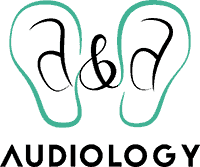- The Connection Between Hearing Loss and Dementia - July 30, 2024
- The Advantages of Rechargeable Hearing Aids - July 16, 2024
- How to Enjoy Music Festivals While Protecting Your Hearing - July 3, 2024
Hearing aids have come a long way since the strange and marvelous vacuum tube contraptions of the 1800s. A genuinely revolutionary wave of intelligent, practical devices has only begun to emerge in the last few decades.
They’ve even become fashionable. But in what respects are they considered stylish? In looks, in function, and in the way they have normalized the hearing treatment process. Let’s take a closer look.
Stylish appearances
The lack of customization in hearing aids has historically been one of the most significant barriers to purchasing them. They only came in a few colors, could be seen from a mile away, and were difficult to operate.
Some people were so self-conscious about how their devices looked that they bought them and only used them when necessary. The aesthetic blueprint for hearing aid design has remained relatively unchanged for several years due to this aversion to showing hearing loss: the less noticeable, the better.
However, this view is waning. Hearing aid consumers of the younger generations are less concerned with hiding their hearing aids. They don’t want to perpetuate the stigma of hearing loss by hiding it, and they don’t mind if their aids are noticeable. Hearing aids, like headphones, are becoming part of the outward appearance of these younger generations.
Hearing aids are now available in a variety of sleeker styles and more trendy than ever before. The Signia Styletto and the Phonak Virtu are two such examples.
Inventive technology
Hearing aids have never been more technologically advanced:
Automatically Adjusting: While hearing aids could change programs automatically since the early 2000s, they began with the ability to switch between a speech in quiet settings and a speech in a noisy environment. Hearing aids have improved in recent years. They can now evaluate the sound environment you’re in and adjust the settings for that particular environment. This has resulted in much more effective improvements as well as a more pleasant listening experience.
Motion Sensors: Motion sensors are one of the most recent enhancements to hearing aids. As a result, manufacturers have a variety of choices for improving quality of life. Starkey has innovatively implemented this technology, providing fall detection and a pedometer, among other features.
Music Programs: For a long time, all of the advances in speech amplification and sound smoothing that helped those with hearing loss understand speech better made listening to music a challenge. Manufacturers have been working hard in recent years to improve the sound quality of music. One factor that has helped is that modern speakers have a higher high-frequency response, enabling them to enhance more sounds in music. Microphone technology is also improving, allowing for the recording of more sound without distortion.
Direct Streaming: Except for the smallest choices that sit deep in the ear, the vast majority of modern hearing aids now directly connect to a variety of your most-used devices, such as smartphones and televisions. Now you can stream calls, Tv shows, and podcasts directly to your hearing aids.
The end of hearing loss stigma?
While innovations are revolutionizing hearing aid users’ listening experiences, their greatest promise may be their ability to make hearing aids an everyday accessory, eliminating the stigma of their use and reaching more patients with hearing loss than ever before. Anything that makes patients’ lives a little simpler will increase device acceptance and, as a result, overall patient care.
Since more people will continue to benefit from such advanced technologies, artificial intelligence and Bluetooth capabilities such as language translation and motion detection will broaden the hearing aid market. It’s becoming fashionable to wear a hearing aid now that music and movies can be streamed directly to the ear. It’s a significant change because hearing aids have historically been seen as necessary rather than desirable. The stigma will fade as new technologies, and more stylish designs continue to proliferate.
The better you hear, the younger you appear.
We will assist you in selecting the right option for your specific needs, whether you are new to hearing loss or have been dealing with it for decades. We recognize that getting used to hearing aids can be difficult for first-time users. Our knowledgeable staff can assist you in acclimating to your new hearing aids.
Are you ready to take that first step? Contact us today to set up an appointment.

